-
 Bitcoin
Bitcoin $118900
-2.33% -
 Ethereum
Ethereum $4288
-0.13% -
 XRP
XRP $3.151
-3.21% -
 Tether USDt
Tether USDt $1.000
0.02% -
 BNB
BNB $809.5
-1.17% -
 Solana
Solana $175.7
-4.75% -
 USDC
USDC $0.0000
0.01% -
 Dogecoin
Dogecoin $0.2246
-5.75% -
 TRON
TRON $0.3473
2.19% -
 Cardano
Cardano $0.7809
-5.18% -
 Chainlink
Chainlink $21.38
-3.48% -
 Hyperliquid
Hyperliquid $43.29
-5.53% -
 Stellar
Stellar $0.4375
-3.21% -
 Sui
Sui $3.685
-6.68% -
 Bitcoin Cash
Bitcoin Cash $595.2
3.50% -
 Hedera
Hedera $0.2483
-6.60% -
 Ethena USDe
Ethena USDe $1.001
-0.01% -
 Avalanche
Avalanche $23.03
-5.28% -
 Litecoin
Litecoin $119.5
-5.02% -
 Toncoin
Toncoin $3.395
-0.07% -
 UNUS SED LEO
UNUS SED LEO $9.007
-1.19% -
 Shiba Inu
Shiba Inu $0.00001304
-5.44% -
 Uniswap
Uniswap $11.35
1.57% -
 Polkadot
Polkadot $3.898
-5.43% -
 Cronos
Cronos $0.1671
-0.16% -
 Ethena
Ethena $0.8121
-2.45% -
 Dai
Dai $1.000
0.02% -
 Bitget Token
Bitget Token $4.412
-1.73% -
 Monero
Monero $264.0
-0.64% -
 Pepe
Pepe $0.00001128
-8.12%
What is a leveraged contract?
Leveraged contracts, such as futures or perpetual contracts, empower traders to amplify their returns by borrowing capital, but carry significant risks including magnified losses and the potential for forced liquidations.
Dec 16, 2024 at 11:55 am
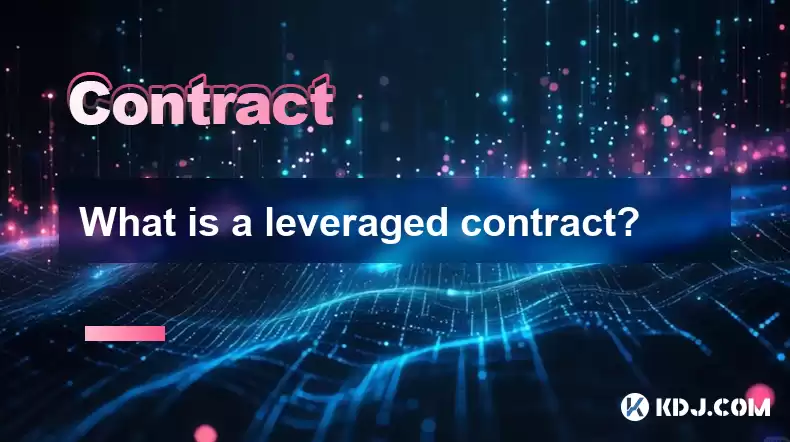
Understanding Leveraged Contracts: A Comprehensive Guide
Introduction
Leveraged contracts, also known as margin trading, offer traders the ability to amplify their returns by borrowing capital from a broker or exchange. This advanced trading strategy carries significant risks but also the potential for substantial profits. This comprehensive guide will delve into the intricacies of leveraged contracts, addressing fundamental questions surrounding their nature, mechanisms, and implications.
What is a Leveraged Contract?
A leveraged contract is a financial derivative that allows traders to trade with borrowed capital, magnifying their potential profits or losses beyond the initial investment. By utilizing leverage, traders can gain exposure to larger positions than they could afford with their own capital. However, this leverage also amplifies the risks, making it crucial for traders to understand the underlying concepts and manage their risk effectively.
Essential Components of a Leveraged Contract
- Leverage Ratio: This ratio represents the amount of borrowed capital relative to the trader's initial investment. For instance, a trader using 10x leverage would have access to $10 for every $1 they invest.
- Margin: The amount of capital deposited by the trader that serves as collateral for the borrowed funds.
- Margin Call: If the trader's margin level falls below a certain threshold, the broker or exchange will issue a margin call, requiring them to deposit additional funds or close their positions.
- Liquidation: If the margin call is not met, the broker will forcibly close the trader's positions, liquidating their assets to cover the borrowed funds and associated losses.
Types of Leveraged Contracts
- Futures Contract: A standardized agreement to buy or sell an asset at a predetermined price on a specific future date.
- Perpetual Contract: A derivative similar to futures contracts but without a fixed expiration date, allowing traders to maintain their positions indefinitely.
- Tokenized Leveraged Contract: A digital asset representing a leveraged position on an underlying asset, typically traded on decentralized exchanges.
Benefits of Leveraged Contracts
- Amplified Returns: Leverage can significantly enhance potential profits, particularly in volatile markets where price movements are substantial.
- Reduced Capital Requirements: Traders can gain exposure to larger positions without tying up a significant amount of their own capital.
- Hedging Strategies: Leveraged contracts can be used to hedge against potential losses in other positions.
Risks of Leveraged Contracts
- Magnified Losses: Leverage can also amplify potential losses, leading to significant financial setbacks that can exceed the initial investment.
- Margin Calls: Fluctuations in the underlying asset's price can trigger margin calls, forcing traders to increase their margin or close their positions.
- Liquidation: Failure to meet margin calls can result in forced liquidation, leading to complete loss of capital.
- Volatility Risk: Leveraged contracts are highly susceptible to market volatility, which can lead to rapid and unpredictable swings in value.
Best Practices for Trading Leveraged Contracts
- Thorough Understanding: Traders should possess a deep understanding of leveraged contracts, including their risks and potential rewards.
- Proper Risk Management: Implementing robust risk management strategies, such as setting stop-loss orders and managing position size, is paramount.
- Optimal Leverage: Traders should carefully determine the appropriate leverage ratio for their risk tolerance and trading style.
- Volatility Assessment: Regularly monitoring market volatility and adjusting positions accordingly is crucial to minimize risk.
- Continuous Education: Staying up-to-date with market trends, trading strategies, and industry advancements is essential for successful leveraged contract trading.
Disclaimer:info@kdj.com
The information provided is not trading advice. kdj.com does not assume any responsibility for any investments made based on the information provided in this article. Cryptocurrencies are highly volatile and it is highly recommended that you invest with caution after thorough research!
If you believe that the content used on this website infringes your copyright, please contact us immediately (info@kdj.com) and we will delete it promptly.
- Dogecoin, Presale, Surge: Riding the Meme Coin Wave
- 2025-08-12 11:10:12
- Dogecoin, Tron, and the ROI Reality Check: What's a Crypto Investor to Do?
- 2025-08-12 11:15:12
- Ethereum Layer-2 Scaling Competition Heats Up as ETH Breaks $4K
- 2025-08-12 10:30:12
- China Regulation, Stablecoins, and BNB Presale: Navigating the Crypto Landscape
- 2025-08-12 11:30:12
- Meme Coins, Investment, and Token Burns: What's Hot in 2025?
- 2025-08-12 10:30:12
- BlockDAG, Chainlink, Hedera: The Cryptos Enterprises are Eyeing
- 2025-08-12 09:30:12
Related knowledge
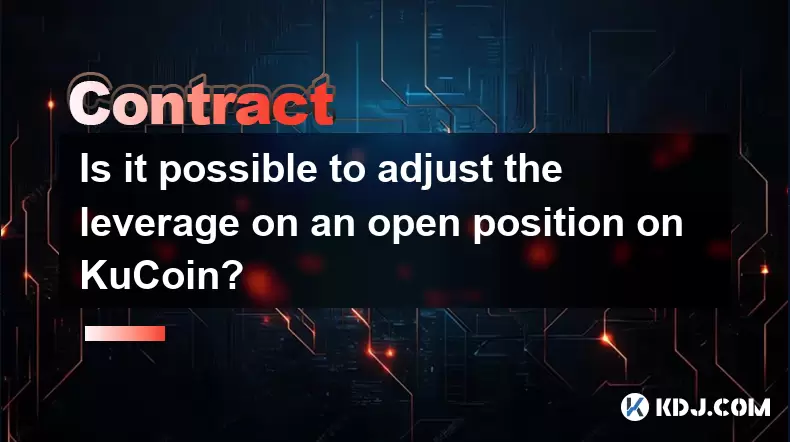
Is it possible to adjust the leverage on an open position on KuCoin?
Aug 09,2025 at 08:21pm
Understanding Leverage in KuCoin Futures TradingLeverage in KuCoin Futures allows traders to amplify their exposure to price movements by borrowing fu...

What cryptocurrencies are supported as collateral on KuCoin Futures?
Aug 11,2025 at 04:21am
Overview of KuCoin Futures and Collateral MechanismKuCoin Futures is a derivatives trading platform that allows users to trade perpetual and delivery ...
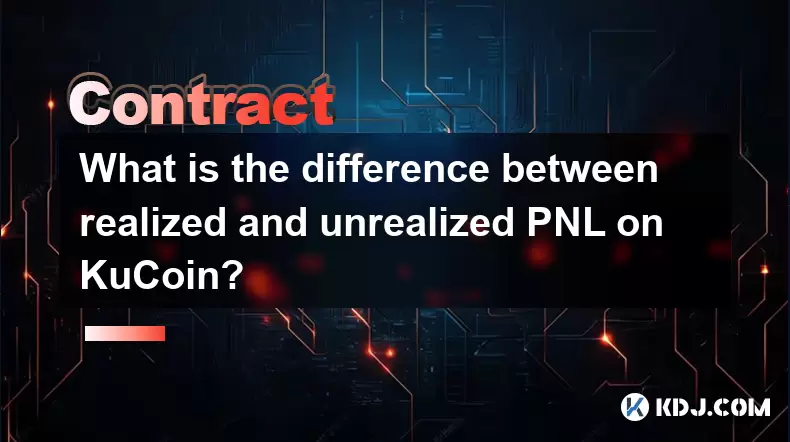
What is the difference between realized and unrealized PNL on KuCoin?
Aug 09,2025 at 01:49am
Understanding Realized and Unrealized PNL on KuCoinWhen trading on KuCoin, especially in futures and perpetual contracts, understanding the distinctio...

How does KuCoin Futures compare against Binance Futures in terms of features?
Aug 09,2025 at 03:22am
Trading Interface and User ExperienceThe trading interface is a critical component when comparing KuCoin Futures and Binance Futures, as it directly i...
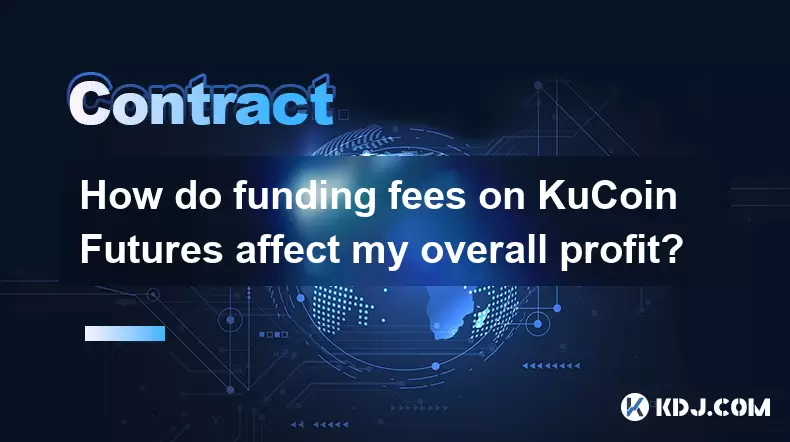
How do funding fees on KuCoin Futures affect my overall profit?
Aug 09,2025 at 08:22am
Understanding Funding Fees on KuCoin FuturesFunding fees on KuCoin Futures are periodic payments exchanged between long and short position holders to ...
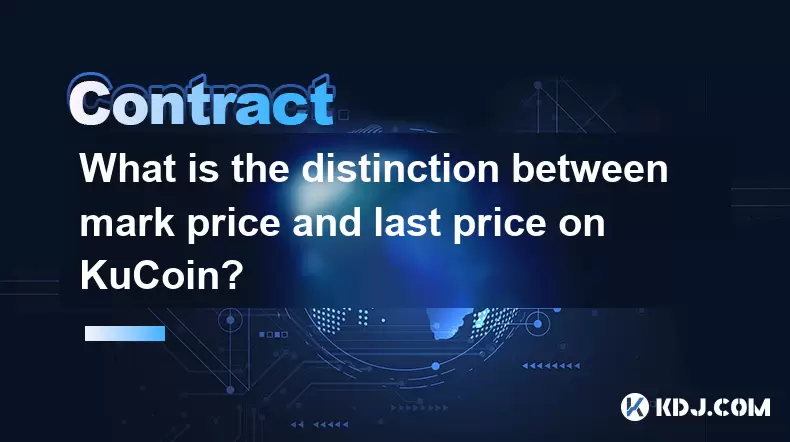
What is the distinction between mark price and last price on KuCoin?
Aug 08,2025 at 01:58pm
Understanding the Basics of Price in Cryptocurrency TradingIn cryptocurrency exchanges like KuCoin, two key price indicators frequently appear on trad...

Is it possible to adjust the leverage on an open position on KuCoin?
Aug 09,2025 at 08:21pm
Understanding Leverage in KuCoin Futures TradingLeverage in KuCoin Futures allows traders to amplify their exposure to price movements by borrowing fu...

What cryptocurrencies are supported as collateral on KuCoin Futures?
Aug 11,2025 at 04:21am
Overview of KuCoin Futures and Collateral MechanismKuCoin Futures is a derivatives trading platform that allows users to trade perpetual and delivery ...

What is the difference between realized and unrealized PNL on KuCoin?
Aug 09,2025 at 01:49am
Understanding Realized and Unrealized PNL on KuCoinWhen trading on KuCoin, especially in futures and perpetual contracts, understanding the distinctio...

How does KuCoin Futures compare against Binance Futures in terms of features?
Aug 09,2025 at 03:22am
Trading Interface and User ExperienceThe trading interface is a critical component when comparing KuCoin Futures and Binance Futures, as it directly i...

How do funding fees on KuCoin Futures affect my overall profit?
Aug 09,2025 at 08:22am
Understanding Funding Fees on KuCoin FuturesFunding fees on KuCoin Futures are periodic payments exchanged between long and short position holders to ...

What is the distinction between mark price and last price on KuCoin?
Aug 08,2025 at 01:58pm
Understanding the Basics of Price in Cryptocurrency TradingIn cryptocurrency exchanges like KuCoin, two key price indicators frequently appear on trad...
See all articles

























































































